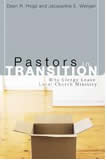Keeping your church attractive, dealing with specific facility issues, and planning how to manage your facilities are all topics that we'll discuss here in our Facilities Management area. Have a question about facilities? Post it in our forum section below!
 Furnishing Your Church in Tough Financial Times
Furnishing Your Church in Tough Financial Times
The economy has hit churches hard all over the country. But, even in the hard times, you still have to make major purchases from time to time. George Kreger from SaveYourChurchMoney.com has some great suggestions:
1. Major “players” need major profit margins! You have received those catalogs for years from the same, recognizable companies. They carry a wide assortment of products from various manufacturers. And they tell you repeatedly that they will save you money. But do they? While I wish it wasn’t the case, the answer is rarely if ever! Read on to learn why.
2. Low overhead by the manufacturer and dealer provides the real savings for you! Those catalogs, ecommerce websites, buildings, employees, advertising, etc. all cost dollars that have to be recovered. Since you (the customer) are their only source of income, you pay for those expenses. By purchasing from someone you trust, but who does not have all those expenses, real savings are truly available!
3. Buying “direct” rarely saves you money! A number of manufacturers sell direct to churches and also through dealers. They often will claim that you can buy direct and save! What they don’t tell you is that they will not sell below a certain price point when selling direct. The reality is if they want dealers to sell their products, they cannot at the same time “undersell” those same dealers. For example, one chair company sells a particular model of chair for $39.95 to churches direct. We can buy the same chair for seven dollars less than a “direct” customer and then pass real savings on to you!
George has some other tips... you can read them here...

David McDaniel has a very interesting post on building and facility strategy... He gives his input on when a church should build, and when they should not. He also gives some alternatives to building a new facility. One of the questions most people ask is... 'when should we build'? Many have used the 75% capacity (or I've also heard 80%) rule... (you won't grow after your worship center has reached XX% seating capacity.) David shatters this with a new thought:
As your crowd increases, maximize your capacity by utilizing multiple services in your current auditorium. Do this until your Seat Turns (total weekend adults in worship divided by auditorium seat capacity) is 2.0 or more. For example, you have an auditorium capacity of 400. Your 11am service has 300 and your 9am service has 200. Your Seat Turns are (300+200)/400 = 1.25. You haven’t grown in 6 months. You listen to church growth people who say that, at 75%, your auditorium is functionally full. That’s why you aren’t growing. You start a capital campaign to go buy land. YOU’RE DEAD WRONG. Exciting churches have standing room only at their 11am services. Make your church more irresistible and consider as many as 4 services on Sunday. An attendance pattern for a church that has 3 services (a 9am, an 11am, and a 6pm service) might be 60%, 110%, and 60% respectively. That’s 2.3 seat turns.
Hmmm... I like that... 'exciting churches have SRO at their main service'...

 Build a New Building or Increase Your Seat Turns?
Build a New Building or Increase Your Seat Turns?
Craig Groeschel has an interesting series going on over at his Swerve blog. A recent post told how they at LifeChurch.tv measure 'seat turns'. According to Craig, one of the interesting metrics they measure is how many times one “seat” is used. To find this number, take your total adult weekend attendance and divide it by total seating capacity. Craig continues...

Derek over at The Relocation Station is offering a free download of The Relocation Manual for Pastors. This looks like an interest piece of work for those who are considering relocating your church in the near future. You might want to check it out…

From ChurchBusiness.com: Three congregations are being honored as ?America?s Safest Churches? this month, as part of National Church Safety & Security Month: St. John?s Lutheran Church in Orange. Calif.; Calvary Baptist Church of Muscatine, Iowa; and Florence Baptist Temple in Florence, S.C. The awards are supported by the National Safety Council and nationally sponsored by GuideOne Insurance.

For growing churches, parking quickly becomes a number one issue. My church, for instance, just bought a home right next to the church so that we could remove it to provide more parking. Bill Couchenour, the President of Cogun Builders has a book out called "Churches...Before You Build" that addresses many of the ‘rules of thumb’ that churches should look at when building a new facility. We’ll share some insights from time to time here at the blog since many of you have either gone through building projects; or will do so soon. Here, for example is some practical advise about "parking"…

Did you know that the growth and health of your church has little to do with your physical location? Church health specialist Dr. Thom Rainer recently studied 13 mediocre congregations that grew to become vibrant, healthy churches without changing pastors. To his surprise, he discovered that there was little correlation between location and growth. “One of the surprises was that the location of a church had almost nothing to do with the struggles and subsequent breakout of these churches,” Rainer said. “Some of the churches have great locations demographically, but others have lousy locations.”
Why do pastors leave the ministry? Several common issues emerge from the research of Dean Hoge and Jacqueline Wenger: preference for another form of ministry, the need to care for children or family, conflict in the congregation, conflict with denominational leaders, burnout or discouragement, sexual misconduct, and divorce or marital problems. Of these factors, which form the basis for the central chapters of Pastors in Transition, two are especially important: conflict and a preference for specialized ministry. A close third is the experience of burnout, discouragement, stress and overwork. As the authors explore these factors, they provide significant insights into what can be done to help people stay in ministry. The bestselling author of "The Message" challenges believers to read the Scriptures on their own terms, as God's revelation, and to live them as they read them. Based on his extensive experience as coach and mentor to many thousands of Christian leaders across a broad spectrum of ministry settings, Reggie McNeal helps spiritual leaders understand that they will self-select into or out of greatness.
 Pastors In Transition: Why Clergy Leave Local Church Ministry
Pastors In Transition: Why Clergy Leave Local Church Ministry
 Eat This Book: A Conversation in the Art of Spiritual Reading
Eat This Book: A Conversation in the Art of Spiritual Reading
 Practicing Greatness: 7 Disciplines of Extraordinary Spiritual Leaders
Practicing Greatness: 7 Disciplines of Extraordinary Spiritual Leaders

Hi... I'm Todd Rhoades. I'm a Christ-follower, husband, father and I love to connect leaders with other leaders. Hopefully you'll find something here at MMI you like and will return often. If you want, you can find out more about me or follow my every step on Twitter.
![]()
![]()
- ervin bradford on Kentucky Church Hosts "Bring Your Gun to Church" Sunday
- Top Shopping Malls on Church Seven Nights a Week!
- michael jordan shoes on Web-based Ministry: Are You Taking Full Advantage of the Opportunities?
- on Today's Buzz: Naked Lutherans, Lee Roberson, Rick Warren and Porn, and 'Peanutting' Your Pastor
![]()
Greg Atkinson
DJ Chuang
Dave Ferguson
Craig Groeschel
Bobby Gruenewald
Scott Hodge
Brad Lomenick
Mayberry Driven Church
Tony Morgan
Perry Noble
Dan Ohlerking
Geoff Surratt
Dino Rizzo
Tim Stevens
LN Books Blog
LN Digital Blog
LN Learnings Blog
![]()





